Higher classification Licorice | Scientific name Glycyrrhiza glabra Rank Species | |
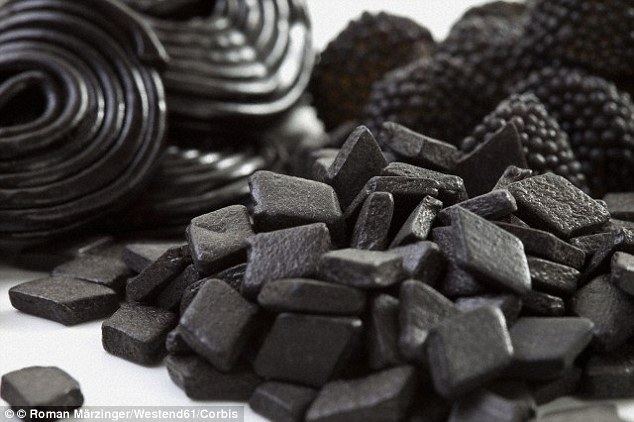 | ||
Similar Fennel, Salty liquorice, Mint, Ginger, Peppermint | ||
Liquorice mulethi glycyrrhiza glabra supplier exporter seeds roots extract
Liquorice, or licorice, (/ˈlɪkrɪʃ, ˈlɪkər-, -ɪs/ LIK-(ə-)rish, LIK-(ə-)ris) is the root of Glycyrrhiza glabra from which a sweet flavour can be extracted. The liquorice plant is a herbaceous perennial legume native to southern Europe and parts of Asia, such as India. It is not botanically related to anise, star anise, or fennel, which are sources of similar flavouring compounds.
Contents
- Liquorice mulethi glycyrrhiza glabra supplier exporter seeds roots extract
- Herb licorice or liquorice roots
- Etymology
- Description
- Chemistry
- Cultivation and uses
- Tobacco
- Food and candy
- Medicine
- Folk medicine
- Toxicity
- References
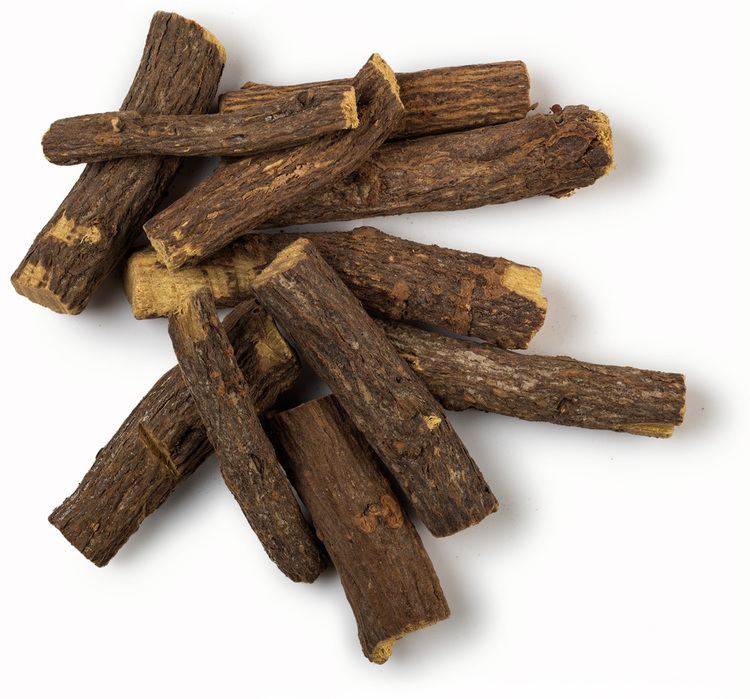
Most liquorice is used as a flavouring agent for tobacco, particularly US blend cigarettes, to which liquorice lends a natural sweetness and a distinctive flavour and makes it easier to inhale the smoke by creating bronchodilators, which open up the lungs. Liquorice flavours are also used as candies or sweeteners, particularly in some European and Middle Eastern countries. Liquorice extracts have a number of medical uses, and they are also used in herbal and folk medications. Excessive consumption of liquorice (more than 2 mg/kg/day of pure glycyrrhizinic acid, a liquorice component) may result in adverse effects, and overconsumption should be suspected clinically in patients presenting with otherwise unexplained hypokalemia and muscle weakness.
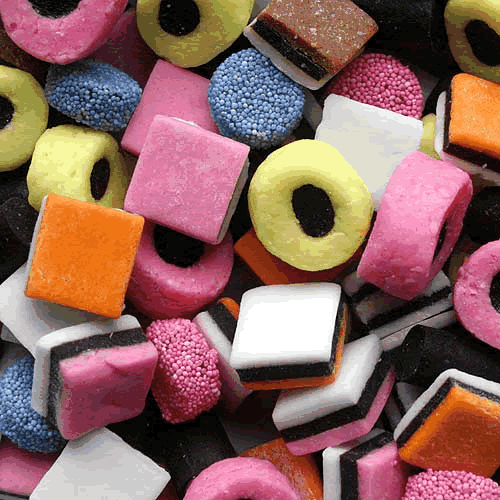
Herb licorice or liquorice roots
Etymology
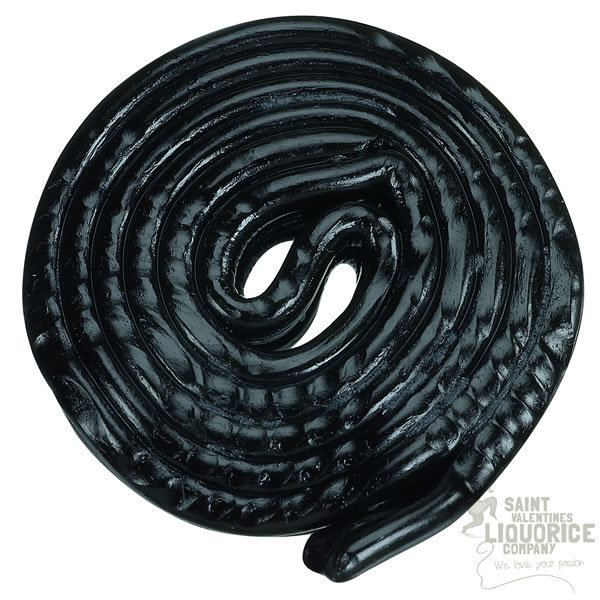
The word liquorice is derived (via the Old French licoresse) from the Greek γλυκύρριζα (glukurrhiza), meaning "sweet root", from γλυκύς (glukus), "sweet" + ῥίζα (rhiza), "root", the name provided by Dioscorides. It is usually spelled liquorice in British usage, but licorice in the United States and Canada.
Description
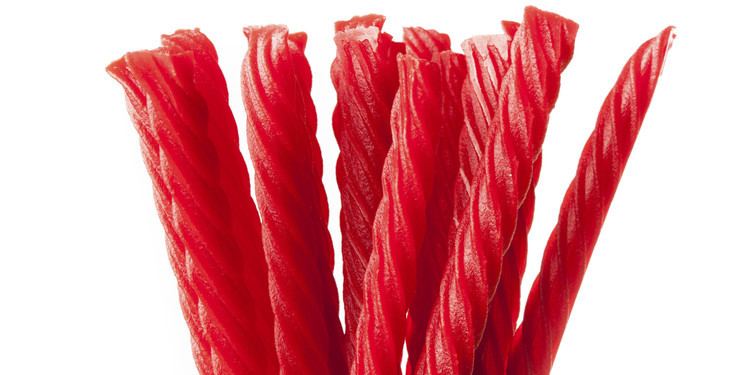
It is a herbaceous perennial, growing to 1 m in height, with pinnate leaves about 7–15 cm (2.8–5.9 in) long, with 9–17 leaflets. The flowers are 0.8–1.2 cm (1⁄3–1⁄2 in) long, purple to pale whitish blue, produced in a loose inflorescence. The fruit is an oblong pod, 2–3 cm (3⁄4–1 1⁄6 in) long, containing several seeds. The roots are stoloniferous.
Chemistry

The scent of liquorice root comes from a complex and variable combination of compounds, of which anethole is up to 3% of total volatiles. Much of the sweetness in liquorice comes from glycyrrhizin, which has a sweet taste, 30–50 times the sweetness of sugar. The sweetness is very different from sugar, being less instant, tart, and lasting longer.
The isoflavene glabrene and the isoflavane glabridin, found in the roots of liquorice, are phytoestrogens.
Cultivation and uses

Liquorice, which grows best in well-drained soils in deep valleys with full sun, is harvested in the autumn two to three years after planting. Countries producing liquorice include India, Iran, Italy, Afghanistan, the People’s Republic of China, Pakistan, Iraq, Azerbaijan, Uzbekistan, Turkmenistan,Turkey, and England.
The world's leading manufacturer of liquorice products is M&F Worldwide, which manufactures more than 70% of the worldwide liquorice flavours sold to end users.
Tobacco
Most liquorice is used as a flavouring agent for tobacco. For example, M&F Worldwide reported in 2011 that about 63% of its liquorice product sales are to the worldwide tobacco industry for use as tobacco flavour enhancing and moistening agents in the manufacture of American blend cigarettes, moist snuff, chewing tobacco, and pipe tobacco. American blend cigarettes made up a larger portion of worldwide tobacco consumption in earlier years, and the percentage of liquorice products used by the tobacco industry was higher in the past. M&F Worldwide sold approximately 73% of its liquorice products to the tobacco industry in 2005. A consultant to M&F Worldwide's predecessor company stated in 1975 that it was believed that well over 90% of the total production of liquorice extract and its derivatives found its way into tobacco products.
Liquorice provides tobacco products with a natural sweetness and a distinctive flavour that blends readily with the natural and imitation flavouring components employed in the tobacco industry. It represses harshness and is not detectable as liquorice by the consumer. Tobacco flavourings such as liquorice also make it easier to inhale the smoke by creating bronchodilators, which open up the lungs. Chewing tobacco requires substantially higher levels of liquorice extract as emphasis on the sweet flavour appears highly desirable.
Food and candy
Liquorice flavour is found in a wide variety of candies or sweets. In most of these candies, the taste is reinforced by aniseed oil so the actual content of liquorice is very low. Liquorice confections are primarily purchased by consumers in the European Union.
In the Netherlands, liquorice candy (drop) is one of the most popular forms of sweets. It is sold in many forms. Mixing it with mint, menthol, aniseed, or laurel is quite popular. Mixing it with ammonium chloride (salmiak) is also popular. The most popular liquorice, known in the Netherlands as zoute drop (salty liquorice), actually contains very little salt, i.e., sodium chloride. The salty taste is probably due to ammonium chloride. Strong, salty sweets are also popular in Nordic countries.
Pontefract in Yorkshire was the first place where liquorice mixed with sugar began to be used as a sweet in the same way it is in the modern day. Pontefract cakes were originally made there. In County Durham, Yorkshire, and Lancashire, it is colloquially known as 'Spanish', supposedly because Spanish monks grew liquorice root at Rievaulx Abbey near Thirsk.
In Italy (particularly in the south), Spain, and France, liquorice is popular in its natural form. The root of the plant is simply dug up, washed, dried, and chewed as a mouth freshener. Throughout Italy, unsweetened liquorice is consumed in the form of small black pieces made only from 100% pure liquorice extract; the taste is bitter. In Calabria a popular liqueur is made from pure liquorice extract.
Liquorice is also very popular in Syria and Egypt, where it is sold as a drink, in shops as well as street vendors. It is used for its expectorant qualities in folk medicine in Egypt.
Liquorice is used by brewers to flavour and colour porter classes of beers, and the enzymes in the root also stabilize the foam heads produced by beers brewed with it.
Medicine
Glycyrrhizin has also demonstrated antiviral, antimicrobial, anti-inflammatory, hepatoprotective, and blood pressure-increasing effects in vitro and in vivo, as is supported by the finding that intravenous glycyrrhizin (as if it is given orally very little of the original drug makes it into circulation) slows the progression of viral and autoimmune hepatitis. In one clinical trial liquorice demonstrated promising activity, when applied topically, against atopic dermatitis. Additionally, liquorice may be effective in treating hyperlipidaemia (a high amount of fats in the blood). Liquorice has also demonstrated efficacy in treating inflammation-induced skin hyperpigmentation. Liquorice may also be useful in preventing neurodegenerative disorders and dental caries.
The antiulcer, laxative, antidiabetic, anti-inflammatory, immunomodulatory, antitumour and expectorant properties of liquorice have been investigated.
The compound glycyrrhizin (or glycyrrhizic acid), found in liquorice, has been proposed as being useful for liver protection in tuberculosis therapy, but evidence does not support this use, which may in fact be harmful.
Folk medicine
In traditional Chinese medicine, liquorice (甘草) is believed to "harmonize" the ingredients in a formula and to carry the formula to the 12 "regular meridians". Liquorice has been traditionally known and used as medicine in Ayurveda for rejuvenation.
Toxicity
Its major dose-limiting toxicities are corticosteroid in nature, because of the inhibitory effect that its chief active constituents, glycyrrhizin and enoxolone, have on cortisol degradation and include oedema, hypokalaemia, weight gain or loss, and hypertension.
The United States Food and Drug Administration believes that foods containing liquorice and its derivatives (including glycyrrhizin) are safe if not consumed excessively. Other jurisdictions have suggested no more than 100 mg to 200 mg of glycyrrhizin per day, the equivalent of about 70 to 150 g (2.5 to 5.3 oz) of liquorice.
